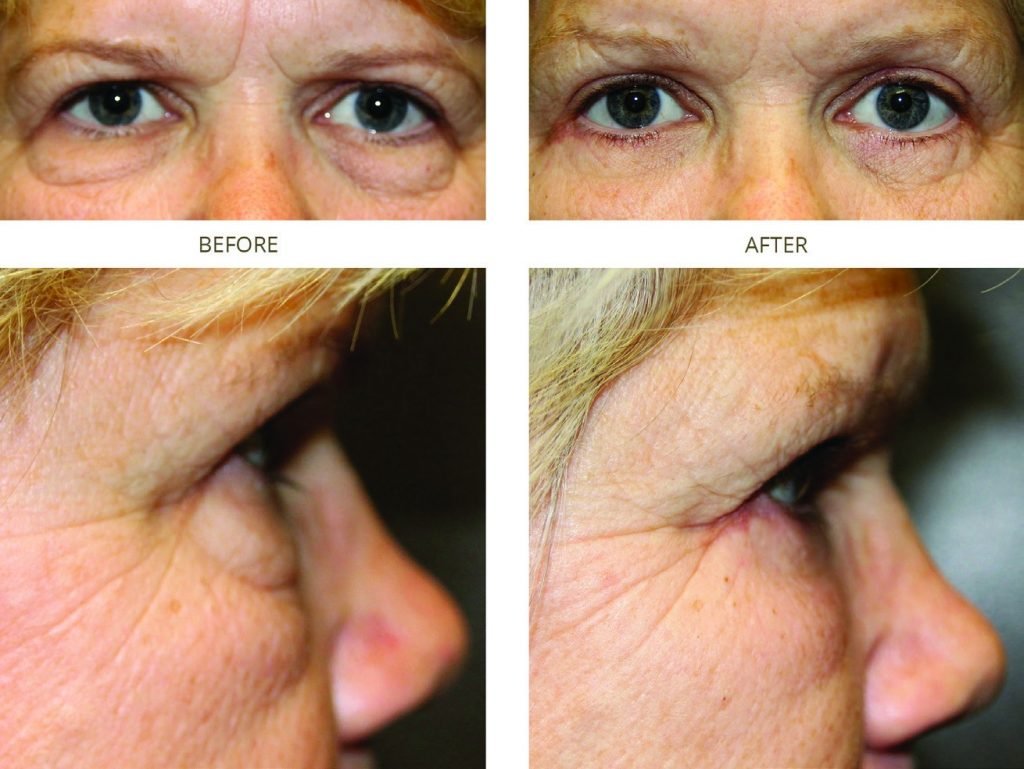An eyelid lift, or blepharoplasty, is a procedure to remove skin and to add or remove fat from the eyelids. The term “eyelid lift” is a misnomer because the eyelid is not truly lifted during surgery. Upper blepharoplasty surgery uses incisions to allow for removal of skin and fat. A thin stitch is then used to bring the skin together to allow for a creation of an eyelid crease. Lower eyelid surgery can involve skin incisions directly below the lash line or an incision on the inside of the eyelid, called a transconjunctival approach. The transconjunctival approach allows for access to the eyelid without visible incisions, making this technique perfect for patients who need fat removed or added. This approach can be combined with laser resurfacing of the eyelid skin to reduce lines and wrinkles. Patients usually have a short recovery time after blepharoplasty. Although bruising and swelling is usually worse on the day after surgery, they quickly begin to disappear. During the first 48 hours, the use of cool compresses can greatly reduce bruising and swelling around the eyes and face. Light activity such as walking will also help speed healing. Thin bandages are usually placed over the incision sites and removed in several days, while the stitches can remain in the skin for about a week. Sometimes self-absorbing stitches are used that do not require removal. Most people return to normal activities after seven to 10 days following blepharoplasty. By two weeks after eyelid surgery, the majority of the bruising and swelling will resolve. As with any surgery, there are potential risks and complications of blepharoplasty. The major risks include infection, bleeding, scarring, inability to close the eyes, dry eye, abnormal eyelid position, double vision, and loss of vision.





















